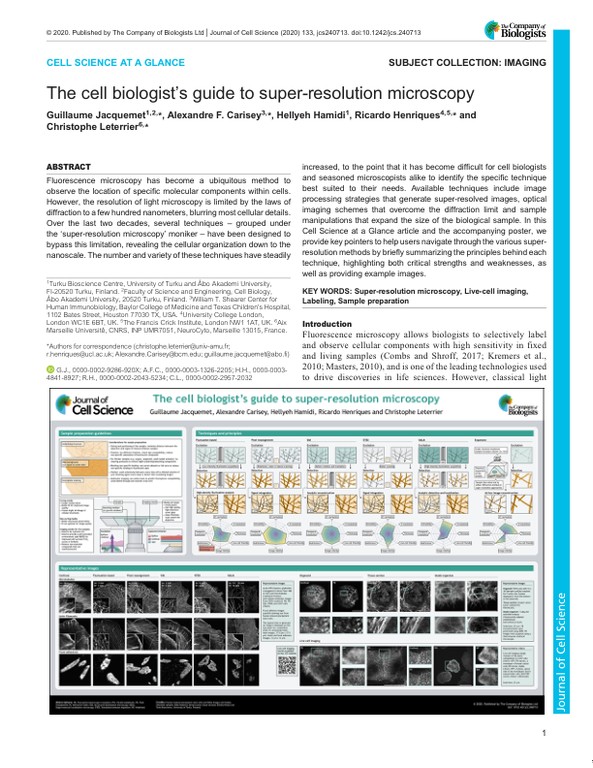The cell biologist's guide to super-resolution microscopy
Technologies: CARE (), NanoJ (), NanoJ-Fluidics (), NanoJ-SRRF () and Nuclear-Pores as references
Review published in Journal of Cell Science, June 2020
Publisher: The Company of Biologists Ltd

Fluorescence microscopy has become a ubiquitous method to observe the location of specific molecular components within cells. However, the resolution of light microscopy is limited by the laws of diffraction to a few hundred nanometers, blurring most cellular details. Over the last two decades, several techniques – grouped under the ‘super-resolution microscopy’ moniker – have been designed to bypass this limitation, revealing the cellular organization down to the nanoscale. The number and variety of these techniques have steadily increased, to the point that it has become difficult for cell biologists and seasoned microscopists alike to identify the specific technique best suited to their needs. Available techniques include image processing strategies that generate super-resolved images, optical imaging schemes that overcome the diffraction limit and sample manipulations that expand the size of the biological sample. In this Cell Science at a Glance article and the accompanying poster, we provide key pointers to help users navigate through the various super-resolution methods by briefly summarizing the principles behind each technique, highlighting both critical strengths and weaknesses, as well as providing example images.